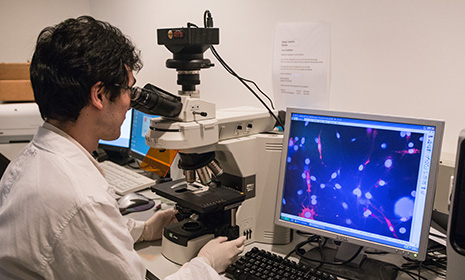HKUMed reveals major shifts in the ecology and evolution of highly pathogenic avian influenza H5 viruses
An investigation by the School of Public Health (the School), LKS Faculty of Medicine of the University of Hong Kong (HKUMed), describes the origins and evolutionary dynamics of resurgent outbreaks of highly pathogenic avian influenza H5 viruses. Led by Dr Vijaykrishna Dhanasekaran, Associate Professor of the School, the research team identified shifts in the global distribution of H5 virus outbreaks, including newly emerging epicentres. The team’s work suggests that the increasing persistence of avian influenza in wild bird populations is driving the evolution and spread of new strains. Their work underscores the need for improved mitigation and elimination strategies to limit future epizootic outbreaks. The findings were published in the highly prestigious journal Nature [Link to publication].
Background
The highly pathogenic avian influenza virus first emerged in poultry in China in 1996, and since 2014, the scale of resurgent H5 outbreaks in wild birds has intermittently expanded and escalated. Since 2021, highly pathogenic avian H5N1 virus activity has intensified globally, infecting and killing increasing numbers of wild birds and domestic poultry, as well as posing a risk to mammals (including humans). Yet the origins of these recent resurgences, the changing ecology, and the underlying evolution of the viruses has been unclear.
Research methods, findings and significance
Dr Dhanasekaran and colleagues examined the changing origins and trends of highly pathogenic avian H5 outbreaks using epidemiological data collected by the Food and Agricultural Organization of the United Nations and the World Organisation for Animal Health between 2005 and 2022, along with an analysis of more than 10,000 whole viral genomes.
Key resurgent events were identified in 2016/17, with genome analysis revealing that the viral lineages originated in Asia. But, two new H5 viruses identified between 2020 and 2022 that emerged from African and European bird populations indicate a notable shift in H5 epicentres away from Asia to other continents. These strains were determined to have evolved through genetic reassortment with low pathogenic viral variants as they spread. Using advanced phylodynamic methods, the study revealed the increasing propensity for wild bird populations to sustain H5 virus transmission, which is expanding in terms of geographic and host range, accelerating dispersion velocity, and increasing potential for reassortment.
The findings highlight the continued importance of elimination strategies to limit viral spread and control the prevalence of highly pathogenic avian influenza within global bird populations, as well as the importance of understanding viral evolution to mitigate the effects of, and react to, new strains. These new findings reiterate the need of influenza pandemic preparedness at all levels.
About the research team
The study was led by Dr Vijaykrishna Dhanasekaran, Associate Professor of the School, and the HKU-Pasteur Research Pole and School of Public Health, HKUMed; with team members Xie Ruopeng, third year PhD student; Kimberly Edwards, Project Manager; Dr Wei Xiaoman, former Postdoctoral Fellow; Dr Wong Sook-san and Dr Mark Zanin, Assistant Professors; and Professor Leo Poon Lit-man, Chair Professor of Public Health Virology and Head of the Division of Public Health Laboratory Sciences.
Collaborating researchers included Dr Michelle Wille, from Sydney Infectious Diseases Institute of The University of Sydney and The Peter Doherty Institute for Infection and Immunity, the University of Melbourne, Australia; Dr Rabeh El-Shesheny, National Research Centre, Egypt; Dr Mariette Ducatez, École Nationale Vétérinaire de Toulouse, France; Dr Ghazi Kayali, Human Link, United Arab Emirates; and Dr Richard Webby, St. Jude Children’s Research Hospital, the USA.
Acknowledgements
This work was supported by the National Institutes of Health (75N93021C00016) and National Science Foundation awards (1911955 and 2200310), of the United States.
About the School of Public Health, HKUMed
The School of Public Health, HKUMed has a long and distinguished history in public health education and high impact research. With world leading research in infectious diseases as well as on non-communicable diseases of both local and global importance, the School has made significant contributions through its research and advocacy to improve the health of populations and individuals, both locally and globally. The School is a leading research and teaching hub in public health on influenza and other emerging viruses, control of non-communicable and infectious diseases, tobacco control, air pollution, psycho-oncology, behavioural sciences, exercise science, life-course epidemiology, population mental health, and health economics, health services planning and management. This work has informed international, national and local public health.

A research team from HKUMed reveals major shifts in the ecology and evolution of highly pathogenic avian influenza H5 viruses. The research team members include: (from right) Dr Vijaykrishna Dhanasekaran, Kimberly Edwards and Xie Ruopeng.








.png)
